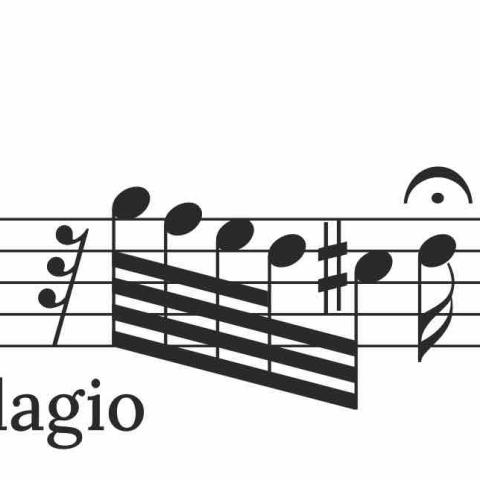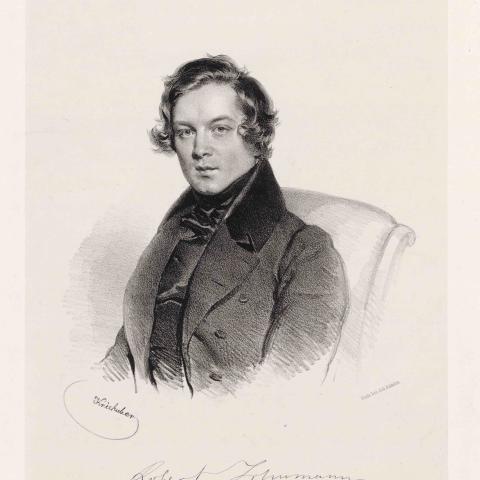Michael Gailit graduated from the University of Music and Performing Arts in Vienna with both performance and pedagogy diplomas in organ as well as in piano. Teaching piano at this institute since 1980, he has also conducted the organ studio at the Musik und Kunst Universität in Vienna since 1995. As church organist he served at Saint Augustine’s Church, 1979–2008; in 2011 he was appointed organist at the Jesuit Church (Old University Church).
Both in his performance and teaching repertoire, Gailit includes all style areas on the basis of their individual performance practices. He toured with solo recitals on both instruments in Europe as well as in North America and appeared with leading orchestras and renowned conductors. Recordings, masterclasses, invitations to juries, musicological publications, editing sheet music, compositions, arrangements, supporting the piano-organ duo repertoire, commissioned works, first performances, and finally occasional trips into the theatre and silent movie repertoire should be noted.
Particular attention was received in 1989 for the first performance of the complete piano and organ works of Julius Reubke (1834–1858), the performance of the complete organ works of Franz Schmidt (1874–1939) the same year, as well as in September 2005 a series of six recitals with the trio sonatas of Johann Sebastian Bach, the organ sonatas of Felix Mendelssohn-Bartholdy, and the organ symphonies of Louis Vierne. Currently Gailit is working on a book, The Enigma BWV 565, a study elucidating new answers and new questions.

Editor’s note: Part 1 of this series appeared in the June 2021 issue of The Diapason, pages 18–19; part 2 appeared in the July 2021 issue, pages 12–14; part 3 appeared in the December 2021 issue, pages 16–18.
Part 4 completes the note-by-note investigation of Toccata con Fuga ex d, BWV 565, of Johann Sebastian Bach.1 After initial observations, the author set the goal of tracing and describing motivic processes throughout the piece, not foreseeing the dimensions of the project.
This survey ended in part 3 with the entry of the fugue theme in measures 70 through 72. Probably intended, both the midpoint of the fugue entry in these measures as well as the midpoint of all 143 measures converge on the same third beat of measure 71.
From beat 3 of measure 72, a bridge of four beats opens the longest interlude that occupies the next fourteen measures. With measure 72 in the restored version,2 the bridge is created almost entirely with the tetrachord.3 In the second half of measure 72, we observe applied motive splitting, in which the first four notes of the fugue theme appear as an independent motive. This mordent motive consists of the mordent as an upbeat to a target note on the downbeat. Showing a subtle gradual process, the first appearance shares the downbeat note F3 with the tetrachord group above, becoming then fully independent with all four notes in the second appearance (Example 47). The new motive will return in the closing recitativ part, assuming a significant role.
Suspense and action
Ten of the fourteen measures of the interlude contain repetitions of arpeggios in a persistent one-voice texture. Does this prove that the piece is inferior in quality as some critics have suggested? Indeed, no! The composer intended to set experimental textures in contrast to each other, instead of taking the well-beaten path of the learned polyphonic style. The interlude, together with the following theme entries, could hardly have been better designed to create suspense. In a movie scene, for example, the background music first becomes gradually quieter and simpler. It then lingers on one note at the end, until suddenly some unexpected action is in full swing. Like an experienced movie director, the composer of BWV 565 proved to be a master of suspense in this interlude. The figurations are placed in the somewhat weaker middle register, only to sink ever lower and become softer toward the end. The harmony oscillates between the tonic and dominant, finally retreating entirely to the tonic. The scene is devoid of any developed motives, as we sink further into the key of D minor.
A turn motive leads into measure 84 where the motivic substance with four descending tetrachords returns. These foreshadow the action in measure 85, where scales of two consecutive tetrachords rush upward twice (Example 48). Only the chromatic shift from F to F-sharp leading to G is needed to announce the theme in C minor, presented in the pedal. The alto voice prolongs the action with an immediate entry in the same key. Long trills enhance the thrill.
The interlude from the second half of measure 90 until the next theme entry in measure 93 is filled completely with tetrachords in all three voices. In Example 49, the motives are presented as eighth notes, omitting the inserted “step” notes to better display the structure. The top voice repeats the figuration from measure 54, except that the four-fold sequence now proceeds downward. In the first half of measure 92 two tetrachord variants switch the voices after only two notes.
In measure 94, several editors have added an A3 to the upper line on the last sixteenth-note beat. The C4, however, already serves as a passing note between B-flat3 and D4. Adding an A3 would result in parallel octaves with the bass. Furthermore, adding an F-sharp3 turns C4 into a dominant seventh requiring a resolution a step downward to B-flat3 (Example 50).
Measures 100 and 101 surprise us with a four-part texture for manuals only. The awkward voice leading requires a well-considered fingering, perhaps more than anywhere else in the piece. It may be that the composer never fully decided whether or not to assign the bass line to the pedal. At least the four quarter notes (which form a tetrachord variant) could conceivably be assigned to the pedal. The jump from the manual sixteenth-note group to the pedal quarter notes, however, is not entirely convincing (Example 51).
Before D minor returns with theme entries in all four voices, an extensive interlude develops the nucleus. Examples 52 and 53 show the many variants and how and where they appear. Motives related to the nucleus are colored red, tetrachords and its variants green, and the remote relatives blue. Gray boxes underline the mordents.
In the interlude section of measures 115 through 119, the trichord returns, alternately ascending and descending within the figurations (Example 54). Forming a climax in measures 120 and 121, trichords are sequentially combined with tetrachords, the latter taken from the fugue theme (Example 55).
In measure 122, the last entry of the fugue theme is ingeniously preceded twice by the complete nucleus (Example 56). The green notes mark the transitional section where the nucleus becomes the fugue theme. After all this intense motivic-thematic work, only two consecutive cadences in the penultimate measure 126 are required to conclude the fugue and to end with a deceptive cadence on a B-flat major chord.
The Recitativ
The final section in the Ringk manuscript starts on a new page and spreads over two pages. Unfortunately half of the heading has been cut off. With the use of the letters “e,” “c,” “i,” “t,” and “a” from the title page, the upper case “R” from a signature entry, and the lower case “v” from the designation Vivace, the heading may be reconstructed (see gray area). Suddenly Recitativ, rather than Recitativo emerges from the manuscript (Example 57).
The recitativ opens with passagework that is entirely based on tetrachords. The red notes in Example 58 reveal the presence of the mordent.
The “Adagissimo” in measure 130 stops on the third note of a tetrachord. Instead of progressing to F4, the expected F surprisingly jumps to the bass, interrupting the resolution of C-sharp to D. It creates an expressive four-fold dissonance with the diminished-seventh chord, a reminiscence of measure 2. A pedal solo recitative leads into a six-four chord in A minor, which in turn is transformed into a six chord in C major by the tetrachord of the first four notes of the nucleus. A performance suggestion to add a mordent on the A3 would serve as a helpful reminder to the performer (Example 59).
The run spanning measures 133 and 134 develops the mordent motive. In addition, all of the notes on the same beats form trichords and tetrachords (Examples 60 and 61).
In measure 136 we discover the retrograde form of the nucleus (Example 62), and in measures 138 and 139 the retrograde form of the B-A-C-H motive. Five descending tetrachords create the framework of the seven closing measures (Example 63).
Startling truths
The note-by-note analysis has revealed two startling truths:
• BWV 565 was composed throughout with a compositional technique called thematic work (thematische Arbeit).
• Measured against Baroque compositional practice, the composer of BWV 565 preferred experimental textures with contrasting character instead of the traditional techniques of Baroque counterpoint.
Therefore, we must conclude that:
• BWV 565 was in all probability not composed by Johann Sebastian Bach. The compositional technique of motivic-thematic work emerged after his death in German and Austrian countries during the second half of the eighteenth century. As a musical term, it was first defined in 1802 by Heinrich Christoph Koch, and Joseph Haydn (1732–1809) has long been considered the first composer to develop the technique.
• There is not a single piece in Bach’s huge œuvre that uses motivic-thematic work, especially to this extent. It is also highly unlikely that he wrote an experimental piece contrary to his musical beliefs, which also anticipates a compositional style first described decades later.
• Pejorative criticism is based on misunderstanding—BWV 565 is anything but youthful or immature. The opposite is true. It has been so skillfully composed that its true nature has remained overlooked for centuries.
• Although BWV 565 may resemble Baroque textures such as the stylus phantasticus, there is not a single example of stylus phantasticus where the parts relate to each other so extensively on a motivic-thematic basis.
• BWV 565 deserves a prominent place in music history, since it may represent the first example of a piece continuously based on motivic-thematic work.
• Whoever composed BWV 565 anticipated distinctly several compositional principles of the Classical era.
Part 5 of this article will further explore these startling assertions, and Part 6 will present an answer to the question, “Who else?”
To be continued.
Notes
1. Pianist-musicologist Dr. John Strauss of Luther College, Decorah, Iowa, was of invaluable help in providing dedicated advice and assistance to the author in the completion of this text.
2. The Diapason published the restored version of measure 72 in “The fitting filler for the fugue,” by Michael Gailit, January 2021, page 17.
3. Tetrachord is the Greek term for four consecutive notes in one direction. The motivic development in BWV 565 occasionally changes the form of the tetrachord. The nature of the compositional style allows for application of this term for all note combinations whose material consists of four consecutive notes, no matter in which order they appear. However, the basic shape of the stepwise progression in one direction should be recognizable.







